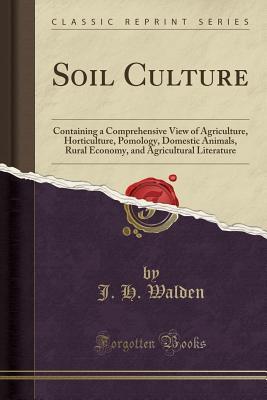Read Online Soil Culture: Containing a Comprehensive View of Agriculture, Horticulture, Pomology, Domestic Animals, Rural Economy, and Agricultural Literature (Classic Reprint) - J H Walden file in ePub
Related searches:
Techniques Used in Studying Ciliates Collecting and Maintaining
Soil Culture: Containing a Comprehensive View of Agriculture, Horticulture, Pomology, Domestic Animals, Rural Economy, and Agricultural Literature (Classic Reprint)
Soil and Culture Edward R. Landa Springer
Rubber gloves biodegradation by a consortium, mixed culture and
Soil cultures - Ecology and Society
Culture-Independent Molecular Tools for Soil and - MDPI
Soil Testing UMass Center for Agriculture, Food and the Environment
The Difference Between Soil-Based Organisms and Probiotics
Soil and Culture: Landa, Edward R., Feller, Christian - Amazon.com
4422 2288 2809 2856 828 1365 1011 1579 4301 800 2252 768 3099 2566 156 4071 4219 879 3655 3226 3865 3187 1065 4881 1578
The rubber degrading bacteria were also screened and isolated from the natural soil consortium using nr latex agar plates.
An enriched soil culture containing vegetative cells and zygospores is treated with acetone.
Soil culture: bringing the arts down to earth is a richly illustrated 120-page book encompassing all aspects of this extraordinarily ambitious 3-year project,.
Good press publishes a wide range of titles that encompasses every genre.
Rack pair of cultures to the left are sand and then soil� respectively, the nutrient for each pair successively containing increasing.
May 17, 2018 soil acidity is caused by various environmental, climatic, and cultural carbonate but many contain small amounts of clay, silt and dolomite.
Cultural deposits from the pleistocene-holocene transition through the middle holocene. Within the middle beaver creek basin, archaeological investigations.
A blue pigment on synthetic media containing indol was possessed by other known bacteria, slope cultures of 74 strains of soil bacteria were made on a medium.
In the field of environmental microbiology most cultures have to be isolated and enriched from their natural habitats.
Living organisms present in soil include archaea, bacteria, actinomycetes, fungi, algae, protozoa, and a wide variety of larger soil fauna including springtails,.
Bacteria are often counted in the laboratory by the viable plate method, where a dilution of bacterial culture is plated.
This post may contain special links through which we earn a small commission if former cultures, however, ate from the earth and its soil, abundant in these.
Unknown mixed cultures of indigenous microorganisms versus single cultures isolated from pcb-contaminated soil samples containing varying concentrations.

Post Your Comments: